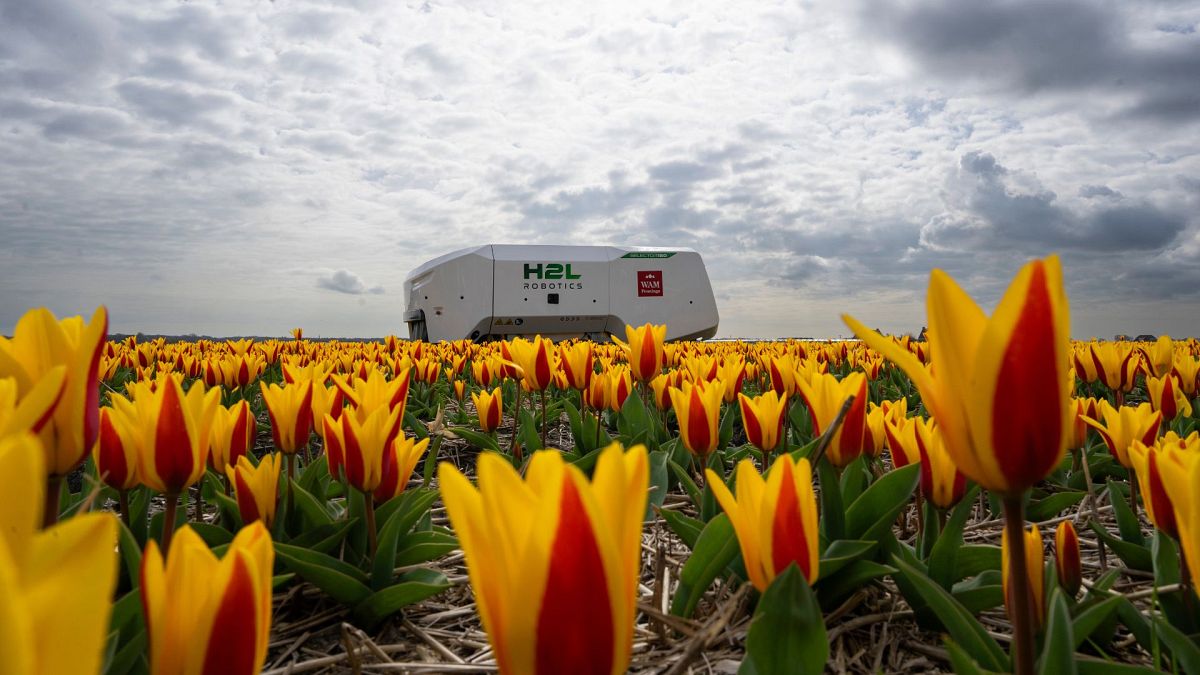
Tulip fields in the Netherlands were threatened by viruses until this AI robot rolled in to save the day.
Theo works weekdays, weekends and nights checking Dutch tulip fields for sick flowers.
The boxy robot - named after a retired employee at the WAM Pennings farm near the Dutch North Sea coast - is a new high-tech weapon in the battle to root out disease from the bulb fields as they erupt into a riot of springtime colour.
On a windy spring morning, the robot trundles along rows of yellow and red 'goudstuk' tulips, checking each plant and, when necessary, killing diseased bulbs to prevent the spread of the tulip-breaking virus. The dead bulbs are removed from healthy ones in a sorting warehouse after they have been harvested.
Tulip breaking virus (TBV) stunts growth and development of plants leading to smaller and weaker flowers. It also weakens the bulb itself, eventually leaving them unable to flower.
As part of efforts to tackle the virus, there are 45 robots patrolling tulip fields across the Netherlands. As the weather warms up, farmers are approaching peak season when their bulbs bloom into giant patchworks of colour that draw tourists from around the world.
In the past, this was work carried out by human 'sickness spotters', says Allan Visser, a third-generation tulip farmer who is using the robot for the second growing season in Noordwijkerhout.
“You could also buy a very nice sports car," for the price of the robot, adds Visser - its makers say the robot costs €185,000.
“But I prefer to have the robot because a sports car doesn’t take out the sick tulips from our field. Yeah, it is expensive, but there are less and less people who can really see the sick tulips,” he says.
It's a lot slower than a sports car, rolling on caterpillar tracks through fields at one kilometre per hour hunting out the telltale red stripes that form on the leaves of infected flowers.
“It has cameras in the front, and it makes thousands of pictures of the tulips. Then it will, determine if the tulip is sick or not by its AI model,” Visser explains, calling it “precision agriculture”.
“The robot has learned to recognise this and to treat it,” he adds.
Erik de Jong of H2L Robotics, the company that makes the robots, says artificial intelligence helps them identify sick flowers and very precise GPS coordinates allows them to pinpoint the flowers that need to be destroyed.
“The heart of the machine is the knowledge that we put into the AI model. The knowledge comes from tulip farmers. So we we use the knowledge of the tulip farmers, we combine it into an AI model,” he says.
Theo van der Voort, who gave his name to the robot at WAM Pennings farm, and who retired after 52 years hunting for sick flowers, is impressed.
“It's fantastic,” he says. “It sees just as much as I see.”

Explore our curated content, stay informed about groundbreaking innovations, and journey into the future of science and tech.
© ArinstarTechnology
Privacy Policy